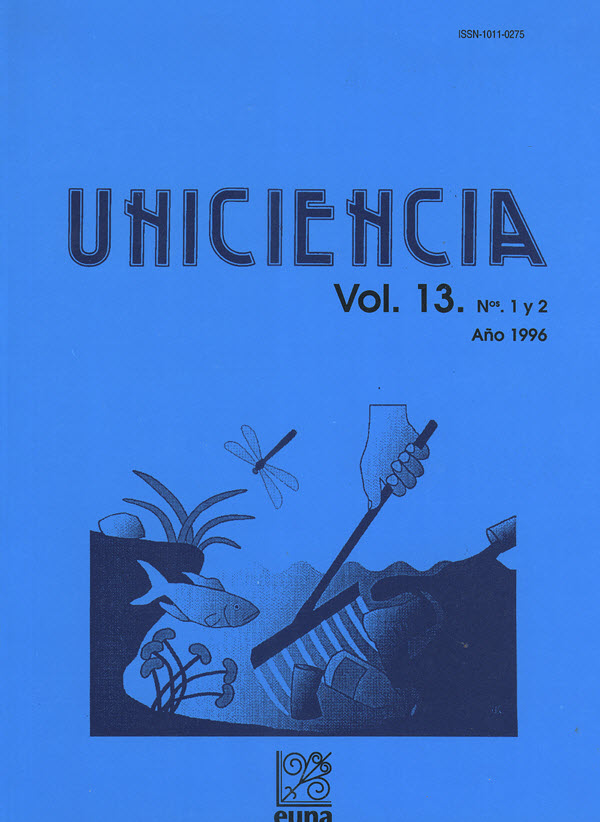Conductividad, oxígeno disuelto, PH y temperatura en el rio bermudez (Costa Rica) y su relación con el uso del suelo en la cuenca (ING)
Keywords:
oxígeno, temperatura, suelo, cuencaAbstract
Temporal and spatial variation in conductivity, dissolved oxygen, pH and temperature were monitored in the Bermúdez River, in the Central Valley, Costa Rica, during 28 months. Most of the watershed is occupied by intensively-managed coffee plantations (53%) followed by urban areas (30%). Water is of acceptable quality in the upper part of basin, where forests and pastures predominate but gradually deteriorates until it becomes useless for almost all human activities. Conductivity, dissolved oxygen and pH show a temporal variation associated with fluctuations in precipitation and with the intensity of the contribution of waste waters.
The situation in the Bermúdez River may be considered as representative of what is occurring in other rivers in the Central Valley. Although an institutional policy to prevent organic pollution from coffee processing plants has been implemented recently, other pollution sources remain. Water from this river is currently used for irrigation of several agricultural fields in the lowlands, a fact that represents a serious human health risk. An integrated river basin management strategy is necessary.
Downloads
Published
Issue
Section
License
Authors who publish with this journal agree to the following terms:
1. Authors guarantee the journal the right to be the first publication of the work as licensed under a Creative Commons Attribution License that allows others to share the work with an acknowledgment of the work's authorship and initial publication in this journal.
2. Authors can set separate additional agreements for non-exclusive distribution of the version of the work published in the journal (eg, place it in an institutional repository or publish it in a book), with an acknowledgment of its initial publication in this journal.
3. The authors have declared to hold all permissions to use the resources they provided in the paper (images, tables, among others) and assume full responsibility for damages to third parties.
4. The opinions expressed in the paper are the exclusive responsibility of the authors and do not necessarily represent the opinion of the editors or the Universidad Nacional.
Uniciencia Journal and all its productions are under Creative Commons Atribución-NoComercial-SinDerivadas 4.0 Unported.
There is neither fee for access nor Article Processing Charge (APC)






